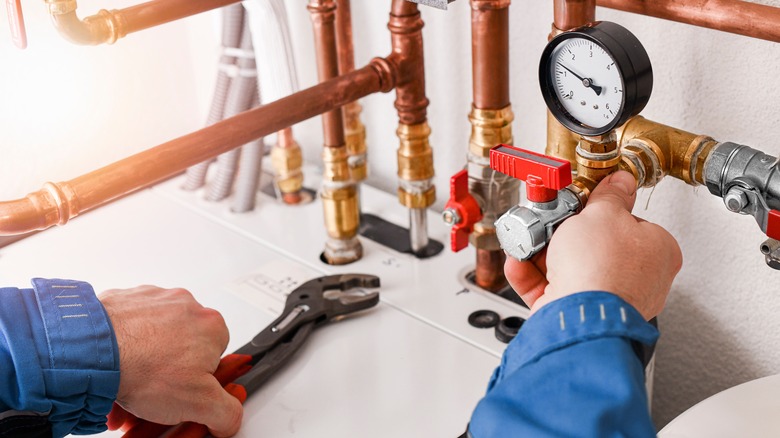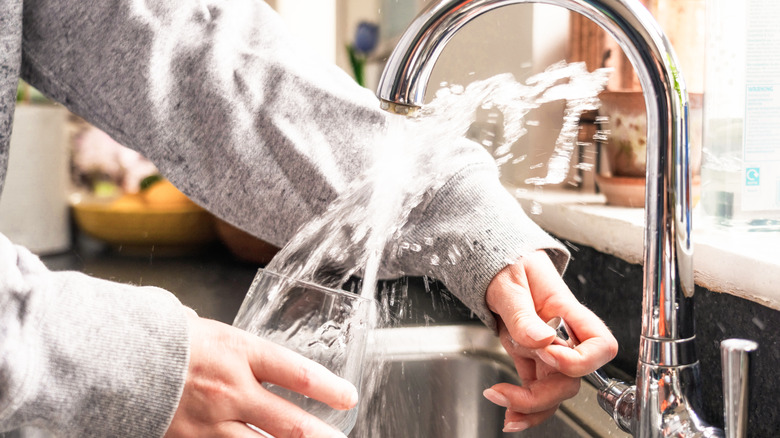How To Know If It's Time To Replace Your Water Pressure Regulator
When you turn the tap water on at home to run a bath or do the dishes, you might not realize that the water flowing from the faucet comes out at a controlled pressure. This is due to the water pressure regulator, or pressure-reducing valve, that manages the water pressure in your home. It's not always necessary, but it is needed for homes that receive water with pressure higher than around 60 PSI. (For everyone with lower PSI around 40-60, there's some options to easily check your water pressure.) The water flows at high pressure from the city's pipes into your home and often fluctuates depending on where the city sends water. Your water pressure regulator manages these fluctuations and keeps your water pressure at the desired level.
Normally, you wouldn't notice the variations in pressure, but if your regulator isn't working, there will be certain tell-tale signs. Super-high water pressure would indicate your regulator is broken. Symptoms like leaky pipes, fluctuating water pressure, or knocking sounds in your pipes are also a few indications it might be time to replace your water pressure regulator.
If your water pressure regulator is starting to fail, it can cause big problems in your plumbing system if left unfixed. Continuously high water pressure can wear down your pipes, eventually causing them to leak. However, the first leak will most likely come from the water pressure regulator itself.
How to fix a bad water pressure regulator
For most standard homes, your regulator is typically found outside. If you have a basement or garage, you might also find it there. Or your water pressure regulator might be located underground in a maintenance hole with a cover. Look for where the main water pipe is that enters your house. That's where you can turn off the water that enters your home. Just past the main shut-off valve is where you'll find the bell-shaped water pressure regulator.
If you have some plumbing experience and the tools, you can usually fix the water pressure regulator yourself. You'll want to close the main shutoff valve to turn off the water supply to your home and then open the faucet closest to the regulator to drain any remaining water from the pipes. Put down a towel and a bucket underneath the regulator, and use Channellock pliers to loosen and remove the regulator. Put the new regulator in its place and secure it with the pliers. Then turn the water supply back on and check for any leaks. Your regulator should be good for around 10 to 15 years. As soon as you see signs of irregular water pressure, make sure you get your water pressure regulator fixed to prevent any permanent damage to your home. If the regulator seems to be in good working order, and you end up with slow trickles out of the sink, there may be other reasons that your water pressure is low.

